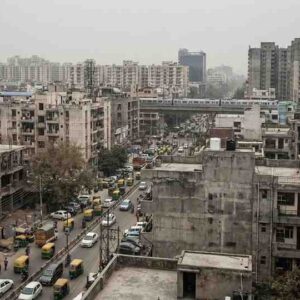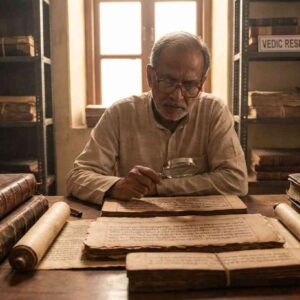Balancing Ideals and Governance in India’s Most Populous State
Lucknow– Uttar Pradesh, home to a rich philosophical legacy and a fast-evolving development agenda, finds itself at a critical juncture. As the state pushes forward with large-scale industrialization, digital transformation, and welfare initiatives, questions are emerging about how well these policies align with the ethical and philosophical ideals that have historically guided its governance.
With ambitious projects such as theJewar International AirportandPurvanchal Expressway, alongside social programs likeMission Shakti, the state is setting benchmarks for growth. Yet, challenges remain: Can Uttar Pradesh balance its historical ethos with the pragmatic demands of modern governance?
Key Metrics Highlighting Progress and Challenges
- Economic Growth: Uttar Pradesh’s GDP grew by 8.1% in 2022-23, reflecting robust industrial and infrastructure development (State Economic Survey, 2023).
- Social Inequality: Despite economic progress, 29% of the population still lives below the poverty line, with significant disparities between urban and rural regions (NITI Aayog SDG Index, 2023).
- Employment Impact: Initiatives like One District One Product (ODOP) have generated over 25 lakh jobs, promoting traditional industries alongside modern enterprises (UP Government Report, 2023).
- Digital Transformation: Over 50 lakh digital devices have been distributed under the Digi Shakti Program, aimed at fostering technological literacy (UP IT Department, 2023).
Philosophical Roots Guiding Policy Decisions
1. Gandhian Ideals of Self-Reliance
The principles ofGram Swaraj(village self-rule) and community-led development, advocated by Mahatma Gandhi, resonate in many of the state’s rural initiatives.
- Policy Reflection: Programs like Mission Shakti focus on empowering women at the grassroots level, encouraging self-reliance through skill development and economic independence.
- Challenges: Despite these efforts, implementation gaps often leave rural women without adequate access to these resources.
2. Ambedkarite Vision of Social Justice
Dr. B.R. Ambedkar’s focus on caste equity and education remains a cornerstone of policies aimed at uplifting marginalized communities.
- Initiatives: Scholarship programs and skill development schemes for Scheduled Castes and Tribes draw heavily from Ambedkar’s philosophy of inclusivity.
- Realities: Critics argue that while these programs show promise, they often fail to address the systemic inequalities that persist in rural areas.
3. Vedic Philosophy and Environmental Ethics
Rooted in ancient scriptures, Vedic ideals emphasize harmony with nature and sustainable living.
- Policy Application: Projects like Namami Gange blend spiritual reverence for rivers with modern technologies to combat pollution.
- Concerns: Industrialization and urban expansion, particularly in areas like Kanpur, often overshadow these environmental commitments.
Modern Policies: Ambition Meets Reality
1. Infrastructure-Driven Growth
Uttar Pradesh’s ambitious infrastructure projects are positioning the state as an economic hub.
- Key Developments: The Jewar International Airport is expected to generate 1 lakh jobs, while the Purvanchal Expressway improves connectivity to underdeveloped regions.
- Ethical Debate: Land acquisition controversies and environmental degradation have sparked protests, with locals questioning whether economic gains justify the costs.
2. Digital Inclusion
Digital transformation is a priority, with initiatives likeDigi Shaktiaimed at bridging the urban-rural digital divide.
- Achievements: The program has provided digital tools to over 50 lakh students, enhancing access to education and e-governance.
- Challenges: Limited internet penetration in rural areas continues to hinder the full potential of these programs.
3. Social Empowerment Programs
Schemes likeMission ShaktiandODOPaim to balance economic growth with cultural preservation and social equity.
- Impact: ODOP has revitalized traditional crafts such as brassware in Moradabad and Chikan embroidery in Lucknow, creating jobs and boosting exports.
- Criticism: While impactful, these programs often struggle with ensuring benefits reach the most marginalized communities.
Balancing Ideals with Practical Governance
Despite the alignment of many policies with philosophical ideals, significant gaps remain in implementation and inclusivity.
- Urban-Rural Divide: Urban centers like Lucknow and Noida reap the benefits of industrialization, while rural regions such as Bundelkhand face persistent poverty and resource scarcity.
- Environmental Concerns: Large-scale projects often overlook sustainability, with critics pointing to deforestation and rising pollution levels.
- Electoral Cycles: Policies sometimes prioritize short-term gains over long-term ethical considerations, driven by electoral pressures.
Looking Ahead: What Lies Ahead for Uttar Pradesh?
1. Strengthening Grassroots Governance
- Empower Panchayati Raj institutions to ensure local voices are integrated into state-level decisions, reflecting Gandhian ideals.
2. Promoting Sustainability
- Implement green technologies in urban and industrial projects to align with Vedic principles of environmental stewardship.
3. Addressing Inequalities
- Expand access to education, healthcare, and employment for marginalized communities, ensuring policies reflect Ambedkarite values.
4. Inclusive Digital Transformation
- Focus on improving rural internet connectivity to bridge the digital divide and enhance participation in e-governance.
Conclusion
Uttar Pradesh’s journey of development is a complex interplay of ambition, philosophy, and policy. While the state’s leaders have drawn inspiration from its rich philosophical heritage, the realities of modern governance often complicate the balance.
As Uttar Pradesh navigates these challenges, its ability to harmonize ideals with practical solutions will determine whether it emerges as a model of inclusive and sustainable progress for the rest of India.












